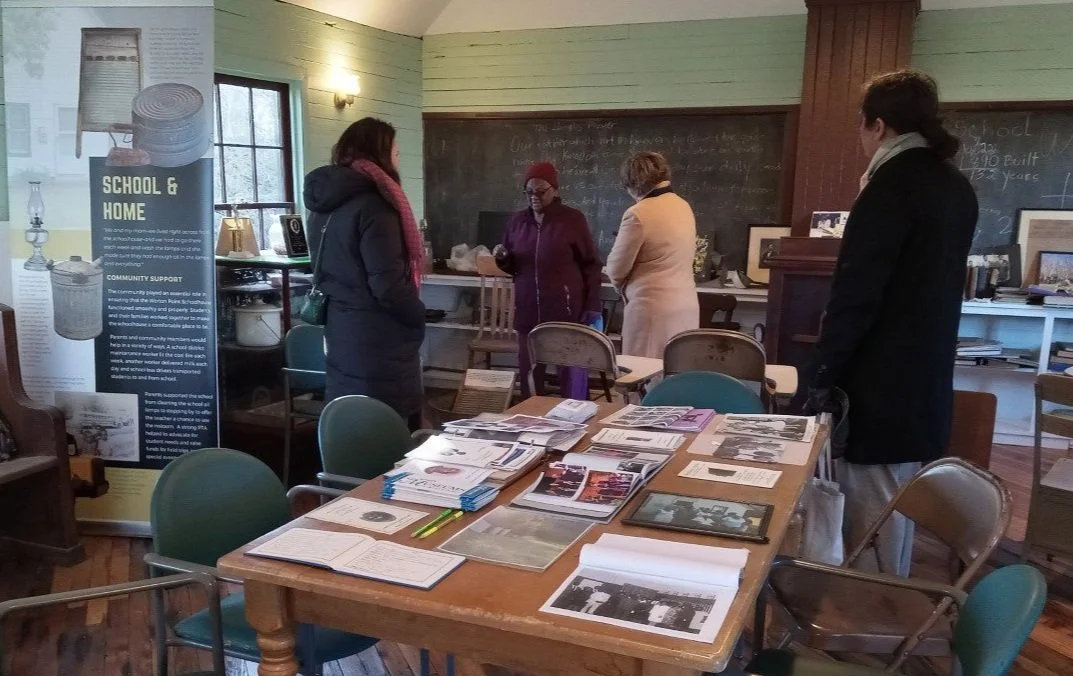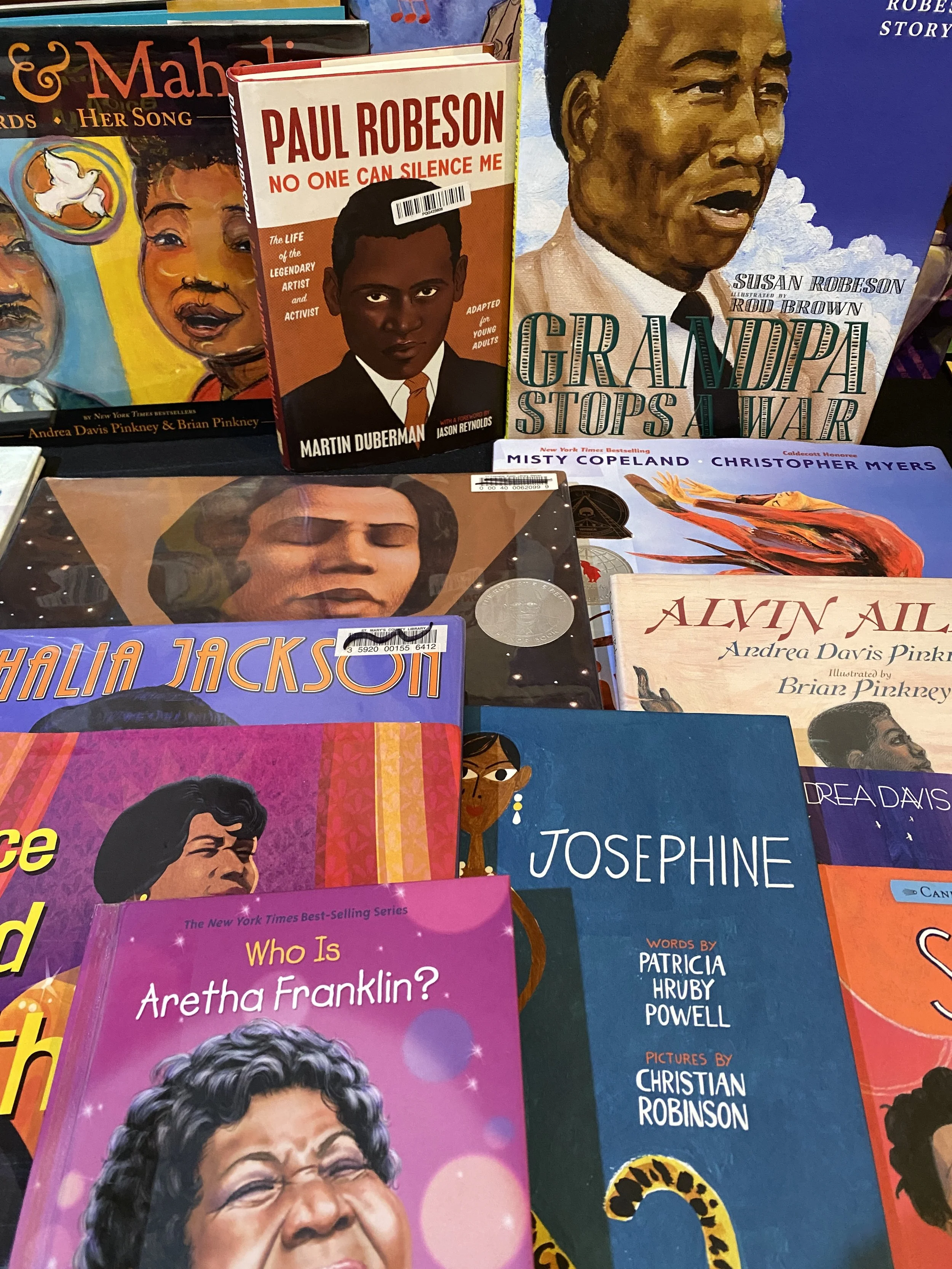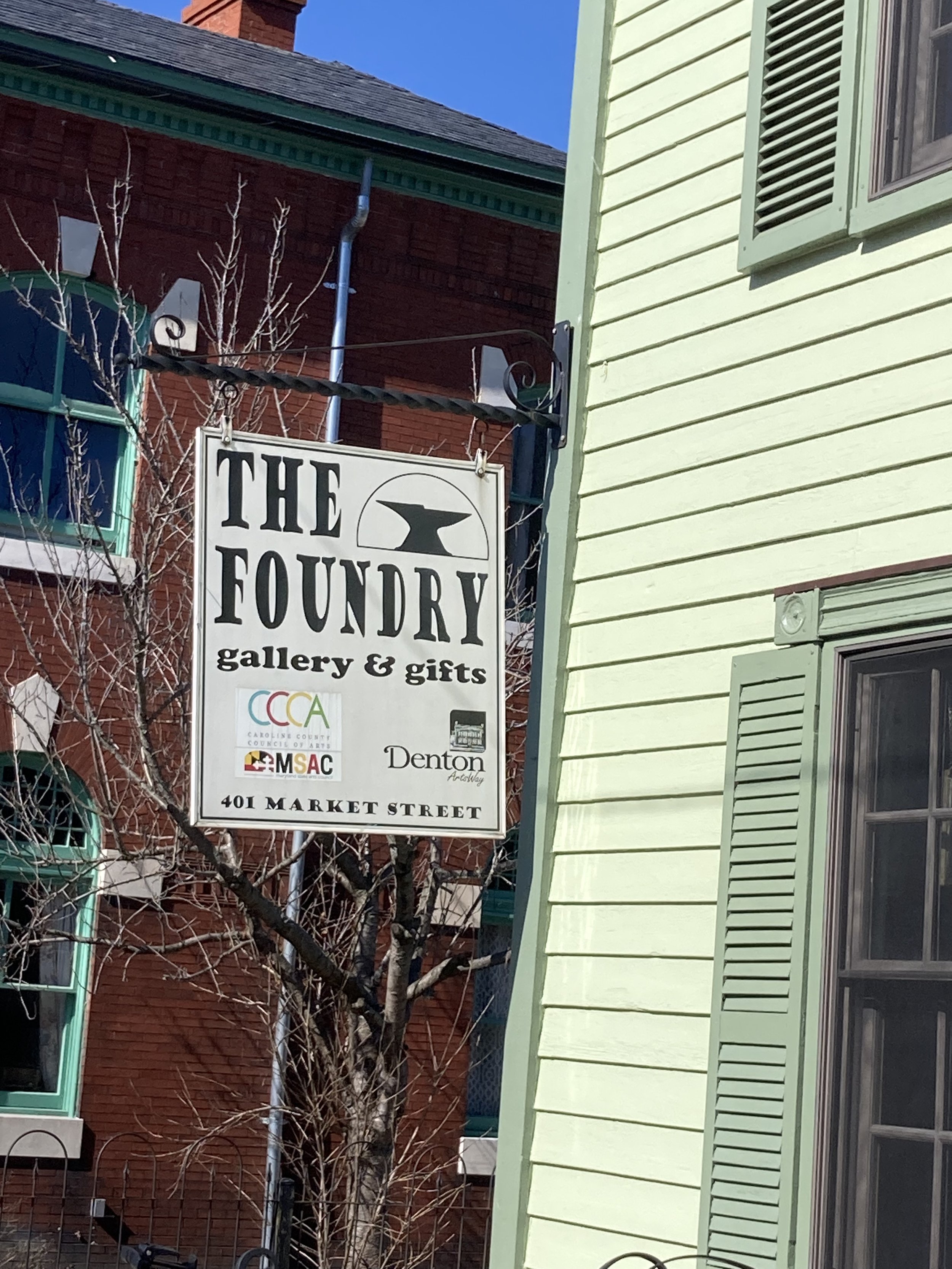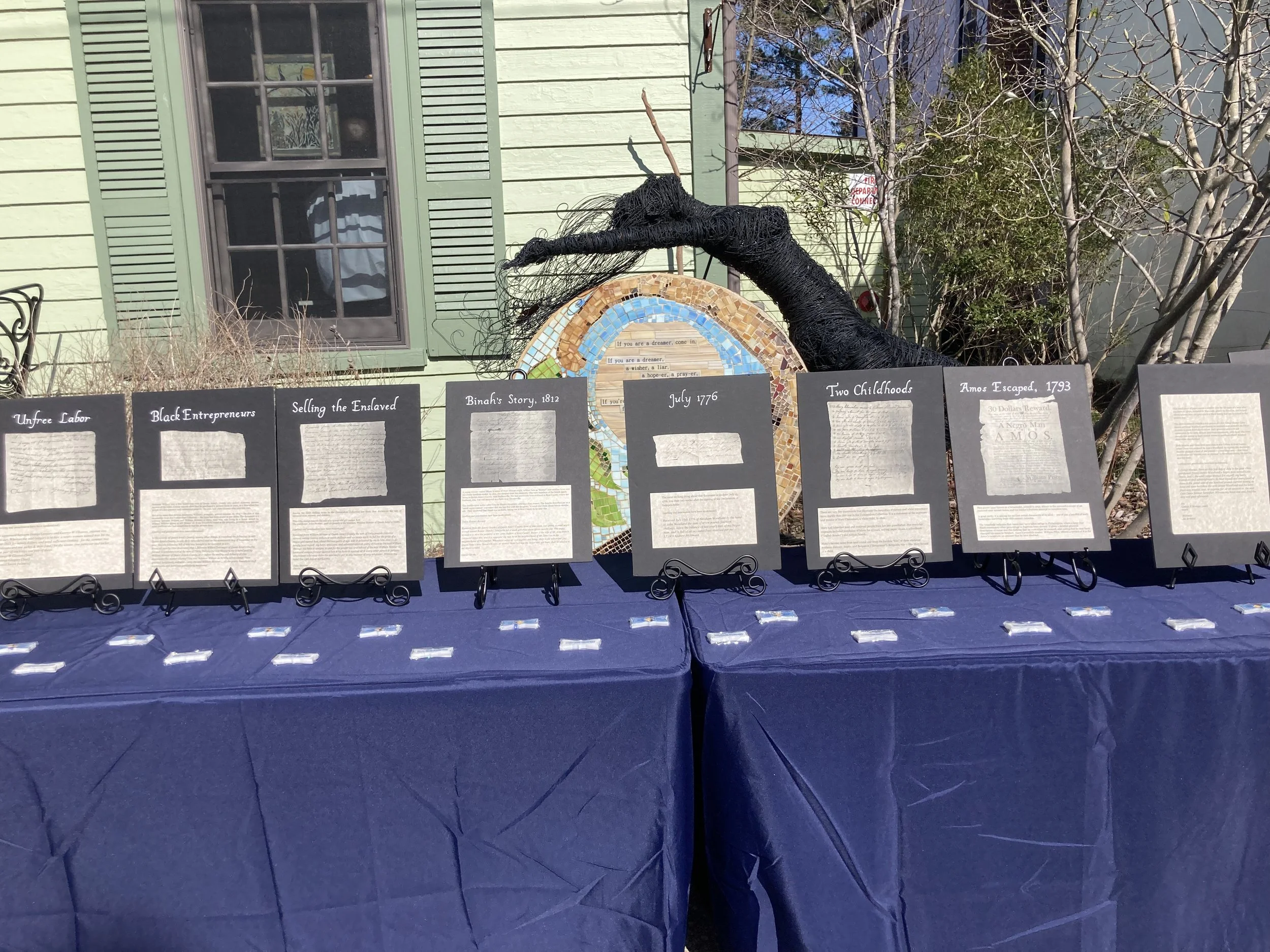Chesapeake Heartland Celebrates Black History Month on the Eastern Shore by Dominic Rapposelli
Black History Month, which occurs annually in February, is a nationwide observance that celebrates Black history, culture, and the notable contributions of past and living African American individuals. This celebration of Black history and culture is central to Chesapeake Heartland’s mission; it’s woven into the project’s DNA. In the words of Ms. Airlee Ringgold-Johnson, Chesapeake Heartland community historian, “Black History Month is not just February anymore. It's the whole year.” With this in mind, Chesapeake Heartland and its community partners took advantage of many opportunities in February to present and share about local African American history.
From offering Washington College campus tours to Chestertown Middle School students to sharing resources from the Heartland digital archive with local teachers, education was a central theme across the many events and programs highlighted here. The broad, cross-county engagement with the documents, images, and stories in the digital archive speak to the power of community history, especially when shared with the current community members who have long served as storykeepers themselves. By supporting the work of students, educators, and community organizations, the Chesapeake Heartland project seeks to reaffirm and renew its commitment to make local Black history more accessible in Kent County and beyond.
Teachers from Queen Anne’s County middle schools at Sumner Hall in Chestertown, Md.
The first of these events was a visit from Queen Anne’s County teachers on January 23rd, serving as an early kickoff to February’s activities. A group of 25 educators were invited to explore Chestertown’s Black history from Chesapeake Heartland, Sumner Hall, and the Kent County Historical Society staff. First, the group embarked on an African American history themed walking tour of historic Chestertown, led by Starr Center staff. Teachers were then given the opportunity to examine and explore documents from the Commodore Collection at Sumner Hall, an activity led by Sumner Hall First Vice President Ruth Shoge and Washington College’s Director of Archives, Lindsay Shelton. Building on these 18th and 19th century documents, educators imagined ways they might integrate these stories into their curriculum, weaving historical characters – former community members who lived in the homes and neighborhoods immediately surrounding their school – into their learning activities.
Johnson, who participated in the visit, hopes that programs like these can help the Heartland team to “develop a relationship with the school systems, public and private. We want to offer [teachers] curriculum material that they can use [and make it] readily accessible to them.” Opportunities abound for the Heartland project to connect the documents, artifacts, images, and multimedia in the digital archive with educators who are doing the vital work to share this history with students and communities.
On February 3rd, staff from the Maryland Heritage Area Authority (MHAA) visited Kent County to experience the impact that Chesapeake Heartland is making throughout the Eastern Shore. In 2022, the MHAA awarded a substantial grant to the Starr Center and Chesapeake Heartland in order to expand their community outreach and digitization efforts.
This month also coincided with an opportunity for the Chesapeake Heartland project to directly connect with students themselves. On January 27th, Washington College and the Starr Center hosted a group of 27 students from Chestertown Middle School on a visit to Washington College’s campus. The program was part of the state-funded initiative known as Achieving Academic Equity and Excellence for Black Boys (AAEEB). The initiative is designed to incorporate “a set of evidence-based recommendations and strategies to improve the educational experiences and outcomes for Black boys in Maryland’s schools.”
The students were treated to a full day of activities, which included dorm room and classroom visits, a scavenger hunt in the Intercultural Affairs office, and lunch at Hodson Dining Hall. The students were also able to tour the gym and weight room and play a pickup game with coaches and players from the Washington College men’s basketball team. Washington College senior Jonah Nicholson helped lead the campus tour and participated in a presentation with other current college students. Speaking about the impact of the visit, Nicholson said, “I hope that they got to see successful Black students in a predominantly white setting, knowing that no matter where we are, we can do anything.”
In the afternoon, students were invited to participate in a hip hop lyric writing and recording activity, thanks to the technology available in the Washington College Music Department’s recording studios and assistance from student musicians. Dr. Pat Nugent, Starr Center Miller Director of Civic Engagement, who directed students throughout the day, hopes this visit helped students realize that Washington College is a welcoming and inclusive space. “The middle school students were excited to learn, for example, that they are welcome to go to our basketball games, to study in the Starr Center, or to schedule a time to record their lyrics. And more broadly, after meeting so many of our amazing students, I hope that they come away knowing that college – and maybe even Washington College – can be for them,” he said.
Washington College students presented to visiting students from Chestertown Middle School.
In early March, the Chesapeake Heartland team was invited to Garnett Elementary School to participate in their Henry Highland Garnet Day celebration. The team taught young students about the many African Americans who have made notable contributions to Kent County – and national – history. Project members, in addition to Sumner Hall staff, presented about Henry Highland Garnet, Elmer T. Hawkins, and Emma Miller, all figures central to the school’s own history. In the future, the Chesapeake Heartland project aims to make this rich source material about local Black leaders even more accessible for students by developing lesson plans for K-5 students centered around relevant holdings in the digital archive.
Many February events held on Washington College’s campus and in the community similarly recognized African American history and culture. On the evening of February 13th, Washington College’s department of Education, the Starr Center, Chesapeake Heartland, and Sumner Hall partnered together to host an African American Read-In. Readers of all ages stepped onto Sumner Hall’s stage to share works of literature byAfrican American authors. One participant delivered a powerful reading of The 1619 Project: Born on the Water, a children’s picture book by Nikole Hannah-Jones and Rene Watson. Other readers shared excerpts from poems, young adult fiction, and a 1941 Garnet School yearbook digitized in the archive. By bringing these works of literature to the forefront of Black History month, the event organizers aimed to celebrate reading, literacy, and diversity.
This reading also helped draw participation from all ages, which expands the long-term impact of the events. Dr. Elena Deanda-Camacho, Professor of Spanish and Black Studies and director of the Black Studies minor at Washington College, was heavily involved in the organization of the event. Dr. Deanda made a point of bringing students from her Spanish classes to the read-in to participate in the community collaboration.
Black history can not only be taught in conventional educational settings, but also through public, community celebrations. The Chesapeake Heartland team participated in one such celebration in Denton, Md. on February 18th. Partnering with the Caroline County Council of Arts and the Maryland State Arts Council, the team displayed historical pieces from the archive, including the 1800’s Local Legacies exhibit, which highlights remarkable Black figures from Kent County history. In addition to history, the event also featured live music, an art exhibit featuring the work of local Black artists, and music from local artists. The event took place at the Foundry Art Gallery, an organization that promotes local art depicting the life and culture of the Eastern Shore.
These collaborative inroads throughout the Eastern Shore allow Chesapeake Heartland to have an impact beyond the borders of Kent County. For Johnson, speaking on behalf of the project, collaborating with community organizations in not only Kent, but also Cecil, Talbot, Queen Anne’s, and Caroline counties “completes the story of the Eastern Shore.” A central part of Chesapeake Heartland’s mission has always been to gain a deeper understanding of Black history and culture in the region, which can not be confined by county lines or the well-told histories of prolific Black leaders. “Maryland’s Eastern Shore: it’s more than Fredrick Douglass, it’s more than Harriet Tubman. There’s a lot of people here,” Johnson said. “We never wanted our information to be just about Kent County…they all have a story.”
Another benefit of community events like these is the ability to build trust among citizens of neighboring communities and empower them to share their stories with the project. “African American history is history that has been lost, forgotten, or ignored. We want to tell our history. We don’t want other people to tell our history,” Johnson said. Johnson also explained that people are excited to tell these important stories and share their family experiences.
Nugent echoed her sentiments about the event in Denton. “Not only did we continue to build trust with our Caroline County partners, but we learned so much about Caroline County's significant African American history – what connects it to Kent County's rich history and how it is unique and exceptional in its own right,” he said. By building partnerships and relationships with various community leaders, more people may feel called to share their family history and benefit from the sense of shared community the Chesapeake Heartland project seeks to build.
The Chesapeake Heartland team is on the road all year long showcasing these exhibits and local histories. These stories are part of the lives of those who choose to share them. And by celebrating and sharing them, history is not lost, forgotten, or ignored.
Ms. Airlee Ringgold-Johnson and Jason Patterson, Starr Center Arts and Exhibition Fellow, presented to students at Rock Hall Elementary School on February 27th.







